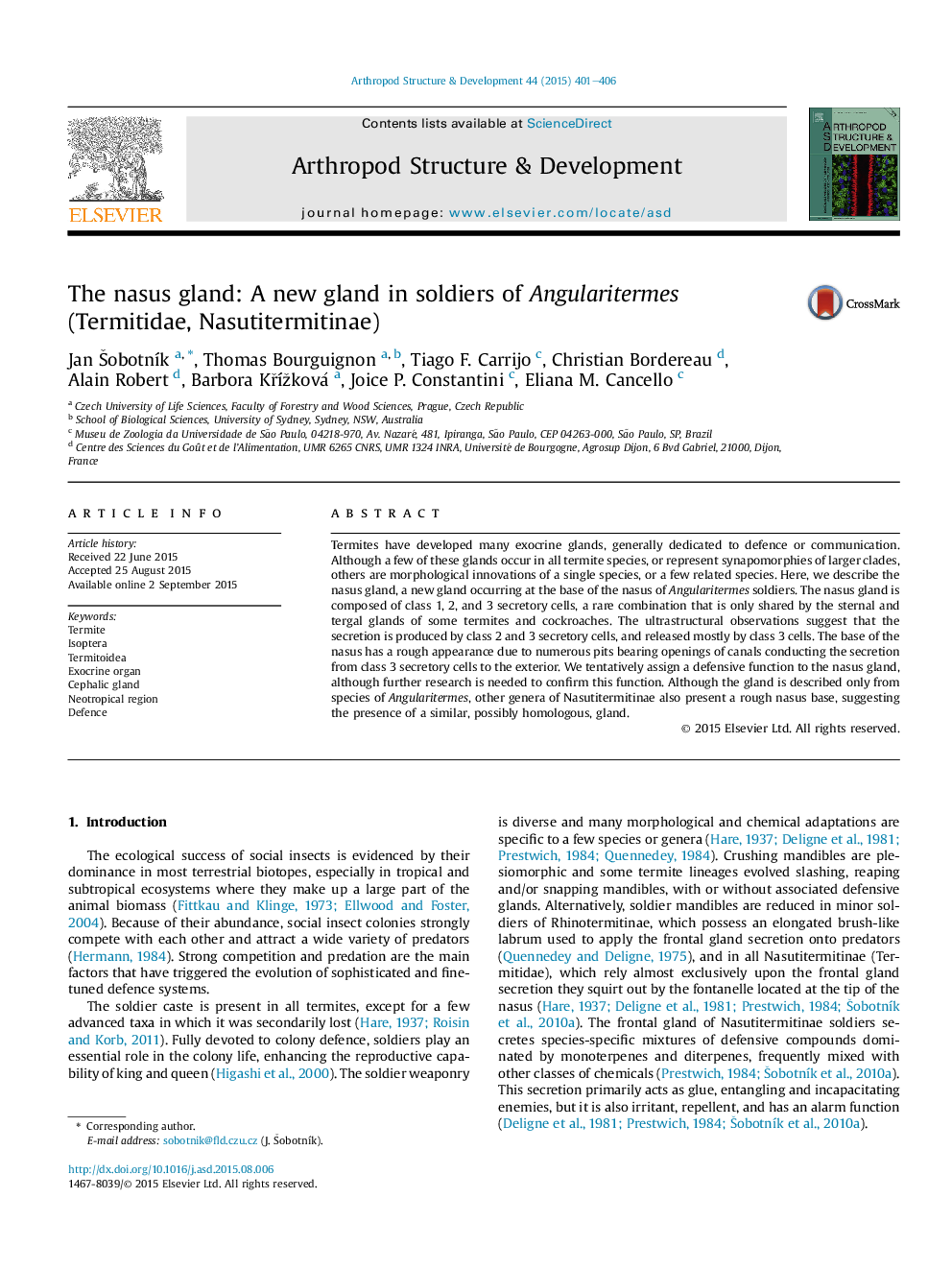| Article ID | Journal | Published Year | Pages | File Type |
|---|---|---|---|---|
| 2778534 | Arthropod Structure & Development | 2015 | 6 Pages |
•We describe the structure of a new exocrine organ, the nasus gland.•The nasus gland occurs in all Angularitermes soldiers.•It consists of secretory cells class 1, 2, and 3.•We tentatively assigned defensive function to the nasus gland.
Termites have developed many exocrine glands, generally dedicated to defence or communication. Although a few of these glands occur in all termite species, or represent synapomorphies of larger clades, others are morphological innovations of a single species, or a few related species. Here, we describe the nasus gland, a new gland occurring at the base of the nasus of Angularitermes soldiers. The nasus gland is composed of class 1, 2, and 3 secretory cells, a rare combination that is only shared by the sternal and tergal glands of some termites and cockroaches. The ultrastructural observations suggest that the secretion is produced by class 2 and 3 secretory cells, and released mostly by class 3 cells. The base of the nasus has a rough appearance due to numerous pits bearing openings of canals conducting the secretion from class 3 secretory cells to the exterior. We tentatively assign a defensive function to the nasus gland, although further research is needed to confirm this function. Although the gland is described only from species of Angularitermes, other genera of Nasutitermitinae also present a rough nasus base, suggesting the presence of a similar, possibly homologous, gland.
